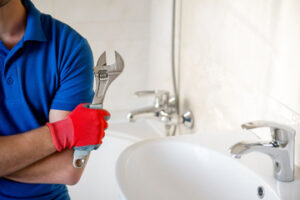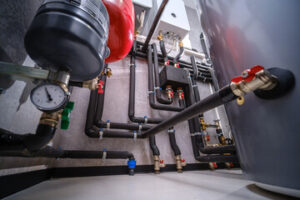HVAC systems help provide acceptable indoor air quality through ventilation with filtration and thermal comfort. HVAC also represents some of the largest energy consumers in schools.
An HVAC system includes a thermostat, furnace, air handler, ductwork, and other units like a humidifier or air purifier. The ideal combination of units can meet your specific home comfort needs and preferences.

HVAC systems help maintain indoor air quality and thermal comfort in buildings, houses, apartments, condos, schools, hospitals, and many other types of structures. A building’s energy efficiency and climate control performance often depends on the HVAC system design, installation, operation, and maintenance. Various HVAC system types exist, each working slightly differently to regulate temperatures and provide optimal conditions in the home or workplace.
The most important component of an HVAC system is the thermostat, which controls your home’s temperature. The thermostat senses the ambient temperature outside and monitors the current temperature inside your home. When it detects that your home needs to be cooled, the thermostat signals the rest of the HVAC system to start circulating cool air throughout your house.
Cooling requires energy, and your home’s insulation level and air leakage rate affect how much of it the HVAC system has to use. Leaks around doors and windows, gaps near plumbing, and a lack of insulation in the attic and basement can cause your AC to work harder than necessary. Fortunately, many of these problems can be fixed with some caulk and DIY know-how.
A heat pump is another option for cooling your home. These systems can both heat and cool your home, depending on the season. The way they do it is by using refrigerant to absorb, transport, and release heat in different directions. They can also be used to circulate warm and cool air from other sources, like a furnace or an air handler.
A newer and more efficient HVAC system can significantly reduce your energy bills. In fact, replacing old equipment can reduce your utility bills by 50% or more ( Department of Energy). This is because high efficiency equipment uses less energy to perform the same job as older and less efficient equipment. This is why it is important to install and maintain high efficiency equipment in your home or workplace.
The heating component of an HVAC system is the one that actually warms the air in your home. The air is heated by a furnace, boiler, or heat pump to keep your house comfortable during the winter. These systems are designed to efficiently heat your home, with minimal energy loss.
The system uses ductwork to distribute the heated air throughout your house. Ductwork is made from metal or fiberglass, and it is insulated to minimize energy loss. It also helps to prevent dust and dirt from entering the ducts, which can be a big problem for air quality.
Your ducts may need to be cleaned from time to time. Dirty ducts can reduce the efficiency of your HVAC system, which in turn increases your energy costs.
A clean duct will also improve your indoor air quality and increase the comfort of your home. If you are considering replacing your old heating equipment, be sure to get new, high-efficiency units. Replacing your equipment with more efficient models can lower your energy bills by up to 50% and significantly decrease emissions.
In addition to heating your property, HVAC systems can also help control humidity. This is important for a variety of reasons, including health and preservation of items such as wood and leather. Air conditioning can also dehumidify the air, and this can make a noticeable difference in your home’s comfort level.
Another benefit of a HVAC system is that it can provide hot water for laundry and dishes. Many of us take this for granted, but the fact is that this can be a huge cost-saver in your household.
When choosing an HVAC system for your home, consider all of the factors involved and your personal preferences. You’ll want to find a system that is both energy efficient and quiet, as well as able to monitor humidity. Having a system that can do all of these things will ensure that your home is always comfortable, regardless of the season. It will also boost the resale value of your property. This will be especially true if you keep up with your routine maintenance and repairs.
Ventilation is the process of providing fresh air to an occupied space and removing stale air. It may be achieved naturally or mechanically. Natural ventilation uses air currents to circulate clean and stale air through ventilation openings, including ducts, as well as windows and doors. Mechanical ventilation systems recover 70 to 80% of the energy in outgoing airstreams and transfer it to incoming airstreams, saving substantial amounts of energy.
The benefits of ventilation are numerous, ranging from health and comfort to structural longevity. For example, excess moisture that builds up inside walls or ceilings can weaken them and cause structural damage. Good ventilation ensures that moisture is removed from the building regularly.
Keeping indoor and outdoor air quality at an acceptable level requires both spot ventilation and dilution ventilation. Spot ventilation draws air from a specific location and exhausts it to the outside, while dilution ventilation distributes low-level contamination throughout an occupied space. In addition, filtering incoming air helps to remove particulates that can trigger asthma or allergies.
Ventilation is also important to reduce odors, smoke and fumes from cooking, smoking, cleaning and using household products. For example, a kitchen exhaust system will remove these pollutants and help to keep the air clean in the rest of the home. Ventilation systems for baths and bathrooms should be in place and operating at all times.
In many homes, it is difficult to maintain good ventilation because ductwork can get closed off or restricted by furniture or other items. This can lead to poor airflow and a build-up of unhealthy gases (such as carbon dioxide) in the room.
To improve ventilation, open or replace blocked vents and clean existing ones. It is a good idea to inspect the condition of the ductwork regularly for cracks or leaks. It’s also a good idea to have the ductwork cleaned every few years. Dirty ducts can be a breeding ground for mold, mildew and other bacteria. This can make people sick and cause them to suffer from symptoms of what is known as “sick building syndrome.” It’s recommended that you consult a professional HVAC engineer to determine the proper type and size of ventilation system for your home or office.
A well-maintained HVAC system can add value to your home. In addition to making your home more comfortable, regular maintenance can also reduce energy bills and improve indoor air quality. You can increase the efficiency of your system by adding smart features such as a smart thermostat, which tracks heating and cooling usage, allowing you to pinpoint potential areas for improvement. Another way to save money is by getting your ductwork cleaned. Dirty ducts can increase your energy bills and cause poor indoor air quality.
HVAC cleaning and maintenance helps prevent wear and tear, increasing the lifespan of your unit and reducing repair costs. This is especially important if you are planning on selling your home in the future. If your HVAC equipment breaks down, it can be costly to replace, which will lower your home’s resale value. Regular maintenance tasks like changing filters and scheduling professional tune-ups can help keep your system running efficiently and reduce repair costs, which will save you money in the long run.
Keeping an eye out for unusual sounds is one of the easiest ways to maintain your HVAC system and spot problems early. These sounds can include screeching, clicking, whistling, bubbling, and hissing. You should make a habit of listening for these sounds, and if you hear them, take action right away.
It is also important to monitor your energy bills, as a poorly maintained system can use more electricity to cool and heat the house. A sudden increase in your utility bill could indicate that the system isn’t working properly and needs a service call.
The outdoor unit should be kept free of leaves, twigs, grass clippings and other debris. If the area around the unit isn’t clear, it can restrict airflow and cause the system to overheat, leading to expensive repairs or a complete replacement of the coils.
Many homeowners and landlords neglect HVAC maintenance, putting their home or rental property at risk. For example, a home warranty won’t cover water damage in the attic or roof if it was caused by lack of maintenance, so it is essential to perform routine maintenance tasks like changing the air filter.


